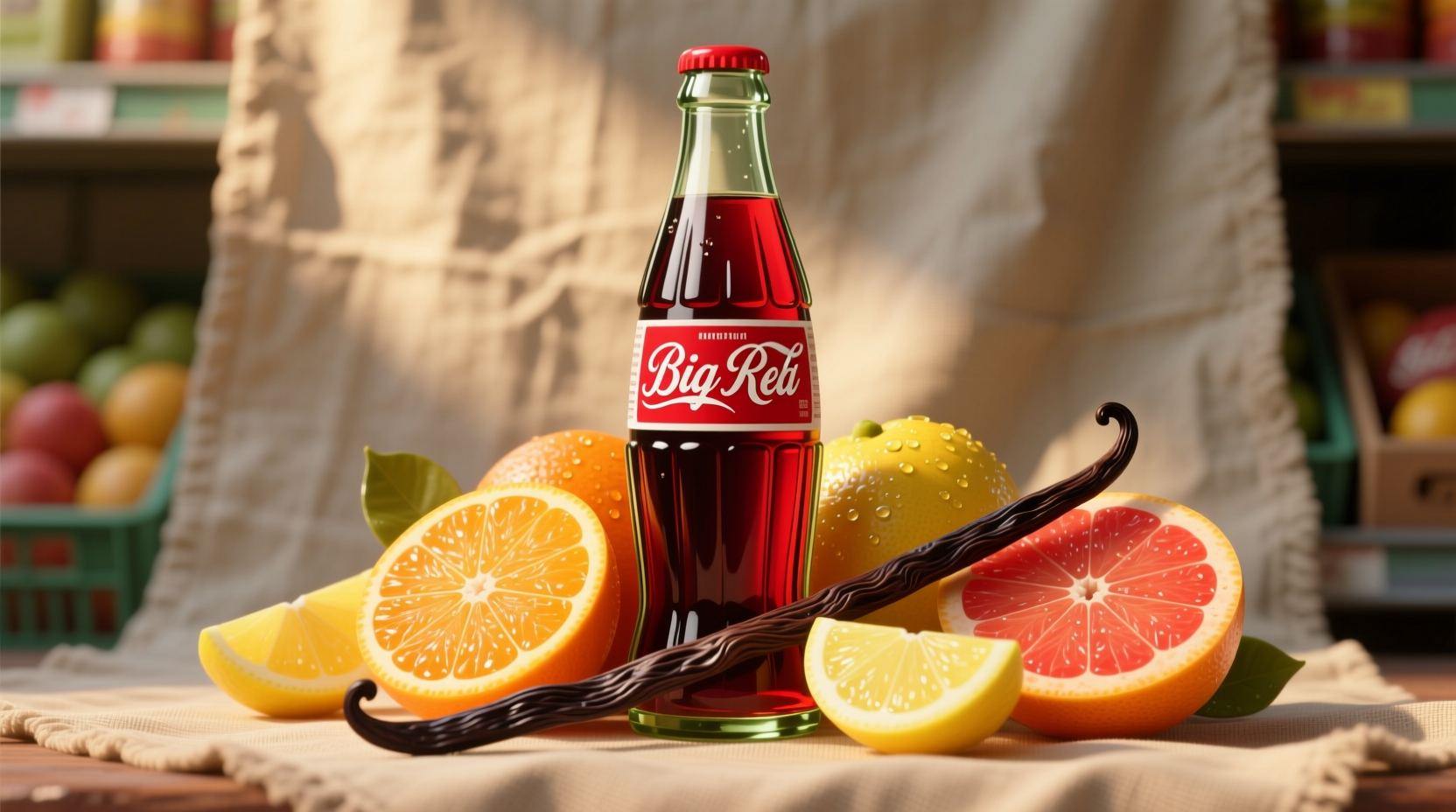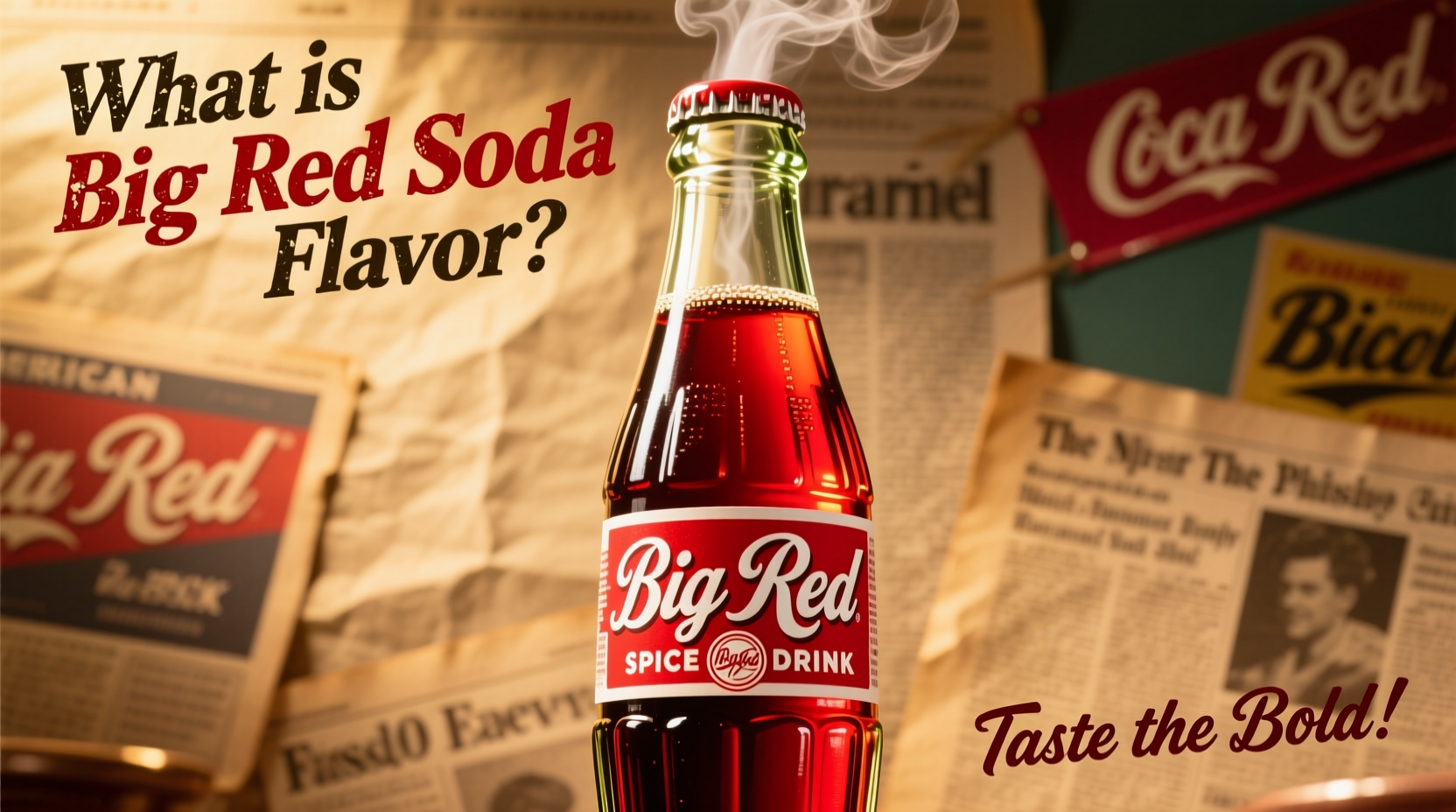Curious about that distinctive red bottle you've seen at convenience stores or family gatherings? You're not alone. Millions of soda drinkers have wondered what is Big Red soda flavor exactly—and why it stands out in a crowded market of carbonated beverages. Unlike standard cream sodas that focus primarily on vanilla, Big Red delivers a complex citrus-vanilla fusion with a signature red hue that has captivated taste buds for nearly a century.
Breaking Down the Big Red Flavor Experience
When you take your first sip of Big Red, you're experiencing a carefully balanced flavor profile that combines multiple taste elements:
- Vibrant citrus notes - Primarily orange and lemon flavors that provide the initial bright, refreshing taste
- Vanilla foundation - The classic cream soda base that creates smoothness and depth
- Creamy finish - A distinctive mouthfeel that differentiates it from standard citrus sodas
- Sweet but not overwhelming - Approximately 39g of sugar per 12oz can, balanced to enhance rather than dominate the flavor
This unique combination creates what many describe as "cream soda meets citrus explosion"—a flavor that's simultaneously familiar yet distinctive. Food scientists note that Big Red's flavor profile activates multiple taste receptors simultaneously, creating a more complex sensory experience than many single-note sodas.

Big Red Through the Years: A Flavor Timeline
Understanding what is Big Red soda flavor requires examining how it evolved since its creation:
| Time Period | Key Developments | Flavor Impact |
|---|---|---|
| 1937-1940s | Created by Grover Thomsen and R.H. Roark in Waco, Texas as "Sun Tang Red Cream Soda" | Original formula established the citrus-vanilla-cream foundation |
| 1950s-1960s | Renamed "Big Red"; became popular across Texas and Southern states | Formula refined for consistent flavor profile despite regional production variations |
| 1970s-1980s | National expansion attempts; acquired by Monarch Company | Slight adjustments to sweetener balance to appeal to broader American palates |
| 1990s-Present | Acquired by Dr Pepper/Seven Up (now Keurig Dr Pepper) | Modern formula maintains core flavor while adapting to contemporary taste preferences |
How Big Red Compares to Similar Beverages
Many people wonder is Big Red just cream soda or something entirely different. The answer lies in understanding how it compares to similar beverages:
- Traditional cream sodas (like A&W or Mug) focus almost exclusively on vanilla flavor with little citrus presence
- Root beer varieties have completely different spice profiles (sassafras, wintergreen) without the citrus elements
- Orange sodas (like Fanta) emphasize citrus but lack the vanilla-cream foundation
- Dr Pepper has 23 distinct flavors but none match Big Red's specific citrus-vanilla-cream combination
The distinctive red color—achieved through food coloring—serves as visual shorthand for its unique flavor profile. Despite the color suggesting artificial strawberry or cherry flavors, Big Red contains neither, which often surprises first-time drinkers.
Regional Popularity and Cultural Significance
While available nationally, Big Red maintains strongest cultural connections in specific regions:
- Texas - Considered the unofficial state soda with deep cultural roots
- Midwest - Particularly popular in Oklahoma, Arkansas, and Missouri
- Southern states - Strong following across the South where it's often served at family gatherings
According to beverage industry reports, Big Red outsells many national brands in its core markets, particularly during summer months when its refreshing citrus notes appeal to consumers seeking alternatives to cola drinks. The soda has developed a loyal following that appreciates its nostalgic value and distinctive taste that doesn't fit neatly into standard soda categories.
Practical Uses Beyond the Bottle
Understanding what is Big Red soda flavor opens up creative possibilities beyond simply drinking it straight from the can:
- Big Red float - Pairs exceptionally well with vanilla ice cream for a refreshing treat
- Cocktail mixer - Works surprisingly well in citrus-forward cocktails as a non-alcoholic component
- Baking ingredient - Adds moisture and flavor to cakes and cupcakes (particularly red velvet variations)
- Marinade base - The citrus and sugar content makes it effective for tenderizing meats
- Slushies - Creates vibrant, flavorful frozen treats popular at convenience stores
Food enthusiasts note that Big Red's complex flavor profile makes it more versatile in recipes than many single-note sodas. Its combination of citrus brightness and creamy sweetness creates balanced results in culinary applications where other sodas might dominate or clash with other ingredients.
What Makes Big Red Nutritionally Unique?
From a nutritional standpoint, Big Red sits within typical parameters for cream sodas but with some distinctive elements:
- Approximately 160 calories per 12oz serving
- 39g of sugar (similar to other major soda brands)
- No caffeine content (unlike many colas and some citrus sodas)
- Contains sodium benzoate as a preservative
- Includes both natural and artificial flavors in its formulation
The absence of caffeine makes Big Red a popular choice for children's events and family gatherings where caffeinated beverages might be inappropriate. This characteristic, combined with its distinctive flavor, has helped maintain its popularity as a family-friendly beverage option.
Frequently Asked Questions
What is Big Red soda made of?
Big Red soda contains carbonated water, high fructose corn syrup, citric acid, natural and artificial flavors, sodium benzoate (preservative), and Red 40 coloring. Its distinctive flavor comes from a proprietary blend of citrus oils (primarily orange and lemon) combined with vanilla and other flavor components that create its signature cream soda profile with a citrus twist.
Is Big Red just cream soda?
No, Big Red is not just standard cream soda. While it shares the vanilla base of traditional cream sodas, Big Red uniquely incorporates prominent citrus flavors (particularly orange and lemon) that distinguish it from conventional cream sodas which focus almost exclusively on vanilla. This citrus-vanilla-cream combination creates a more complex flavor profile that has made Big Red a distinctive beverage category of its own.
Why is Big Red soda red if it's not cherry or strawberry flavored?
Big Red uses red food coloring (Red 40) primarily for brand recognition and visual appeal, not to indicate cherry or strawberry flavor. The red color has become synonymous with the brand since its creation in 1937, creating a distinctive visual identity. Despite the color suggesting fruit flavors, Big Red's primary taste components are citrus (orange and lemon) combined with vanilla, making the red color more of a marketing choice than a flavor indicator.
How does Big Red differ from Dr Pepper?
While both are distinctive sodas, Big Red and Dr Pepper have fundamentally different flavor profiles. Big Red features a citrus-vanilla-cream combination with prominent orange and lemon notes. Dr Pepper contains 23 flavors with a more complex blend that includes cherry, licorice, and spice notes without the citrus prominence of Big Red. Big Red has no caffeine while Dr Pepper contains caffeine, and Big Red maintains a consistent red color while Dr Pepper is brown like cola beverages.
Where is Big Red most popular?
Big Red maintains strongest popularity in Texas, where it was created and is considered something of a cultural icon. It also enjoys significant market share in Oklahoma, Arkansas, Missouri, and other Southern states. According to beverage industry reports, Big Red outsells many national brands in its core markets, particularly during summer months, and has developed a loyal following that appreciates its distinctive flavor profile that doesn't fit neatly into standard soda categories.











 浙公网安备
33010002000092号
浙公网安备
33010002000092号 浙B2-20120091-4
浙B2-20120091-4